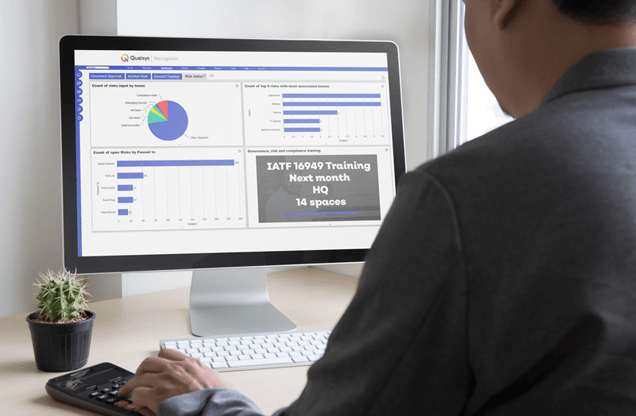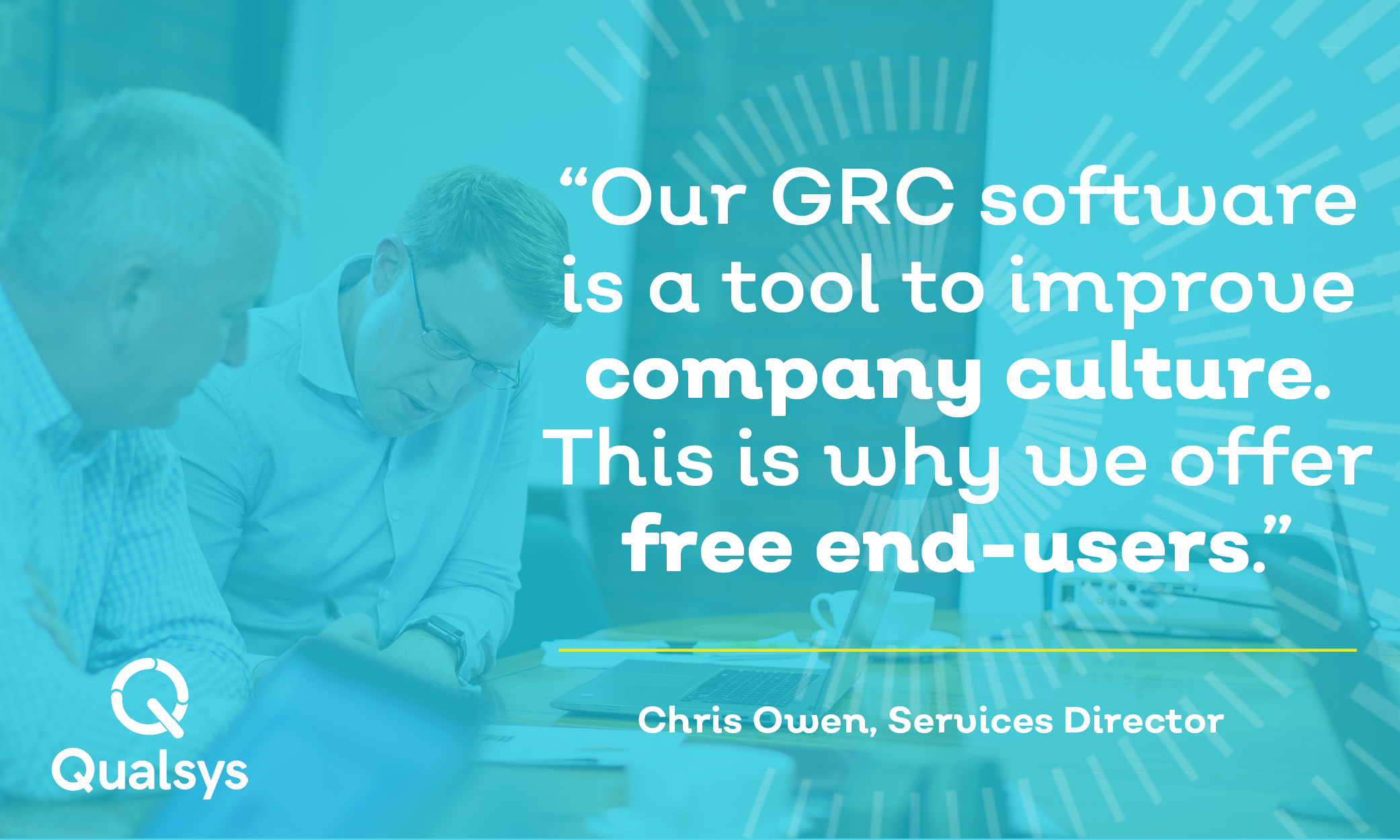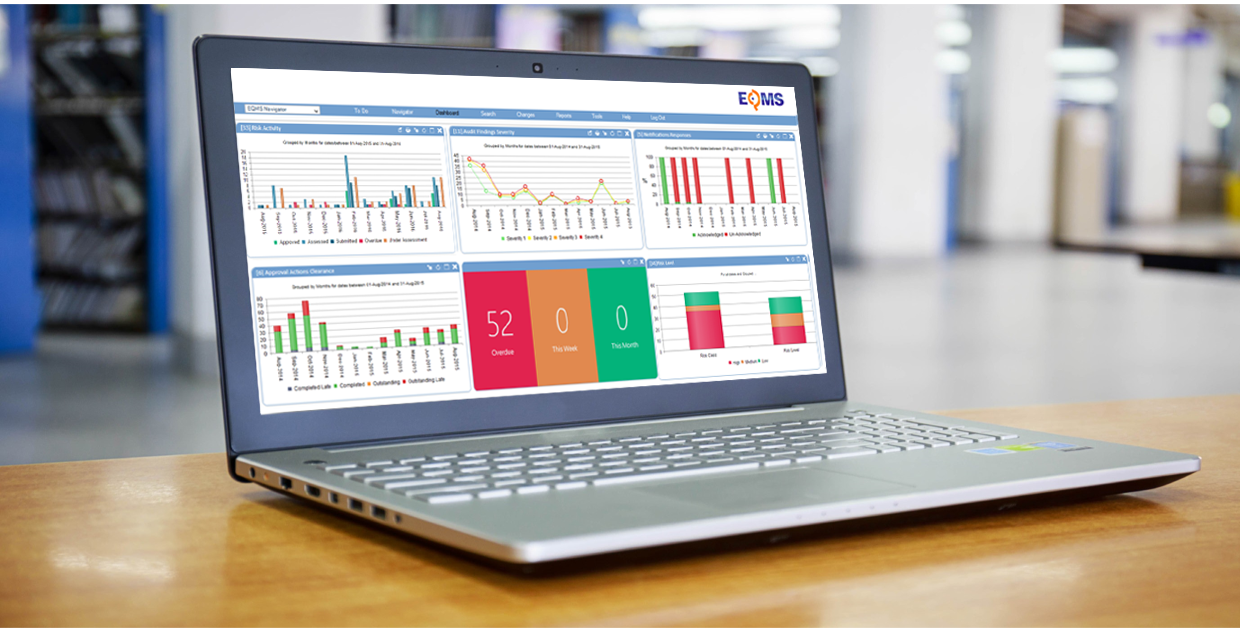Want to contribute to this article?
As a quality professional, you must be the eyes and ears of senior management.
But with so much data available at your fingertips, it can be difficult to decide what you should report on.
When you are choosing which Key Performance Indicators (KPIs) to track, we believe it is always much more valuable to focus on the critical few, rather than the trivial many.
But what are they?
And what do they tell you about business performance?
Click here to see which Key Performance Indicators your quality peers are monitoring!
Download the Global Quality Trends Report 2019
In this article, we have put together 5 essential KPIs you should be tracking, and what they tell you about the health of your business.
Existing Qualsys customers please note: You can track all these KPIs through EQMS.

[Image: Qualsys's BI Dashboard collates data from across the business]
1) Documents: Notification response rate
All of your documented procedures for identifying, collecting, storing, maintaining and amending quality and technical records are essential for keeping a healthy quality management system. But how do you know whether these procedures and records are being followed by all employees?

An essential KPI is the number of employees that have acknowledged document changes.
In our document management module, documents can be sent out to be acknowledged by different groups or individuals. Employees receive notifications and must log in, read the updated documents and acknowledge that they understand the updated procedures.
The response rate to these notifications is then displayed on the GRC Dashboard. From the Dashboard, you can then see a list of everyone who has not acknowledged the document. You can then give this list to your leadership team or follow up yourself.
2) Audits: Findings closure performance
During the EQMS Audit and Inspection Manager webinar, 58% of the quality professionals said that their main auditing challenge was following up recommendations and actions. So how can you make sure that issues identified in audits are actually being addressed?



Another KPI which should be tracked is whether audit findings have been cleared or if they are still outstanding.
In our audit management module, when an issue is found in an audit, a workflow is triggered and notifications are sent to the appropriate individuals. Employees then receive information about what they need to do and a target date. On the GRC Dashboard, you can then see how many audit findings have been cleared, how many are still outstanding and whether they were actioned on time or not.
If there are actions overdue, the list of who is not performing can be accessed from the dashboard and sent to the relevant people to ensure it gets actioned.
3) Training: Overdue training requirements
Ensuring health and safety, product and quality training is up-to-date is essential for many regulatory requirements. Training days can be missed, re-scheduled or cancelled for a number of reasons. So how do measure if all employee training is current?


You should be able to track whether there is any overdue training.
Our training records management module keeps a record of all new, overdue and completed training, as well as those which have never been scheduled or were scheduled but then completed late. Employees receive a notification about upcoming training, then must give their feedback about the training. This is key for management to understand the status of training activity.
4) Risk: Overdue risk assessments
Regulators are increasingly requiring Leadership to demonstrate that they are managing risk. There often needs to be documentation on risk appetite, how risk is being managed and the actions from risk assessments. So how can you demonstrate that risk is being effectively managed?


One key risk indicator is the number of overdue risk assessments. If there are lots which should have been completed, but haven't been, it exposes the organisation to more risk.
Qualsys's risk management module enables you to assess, address, analyse and assign responsibility for risks. All the data for approved, assessed, submitted, overdue and risks under assessment can be viewed from the GRC Dashboard. This enables the leadership team to instantly view whether they are at risk or if risk is being managed appropriately throughout all levels of the organisation.
5) Issues: Overdue issues
Raising and closing issues is important, but what about the time it takes to actually close the issues? If a customer is waiting longer than your procedures say they should be, then quality is failing.

It is important to track the number of overdue issues. In Issue Manager, when an issue is logged, a deadline is set to say when it needs to be dealt with. All the data about the issue status is then aggregated into the GRC Dashboard to demonstrate whether it is raised, closed, approved, on hold or under review.
This KPI gives management a key indication into whether employees need better training in managing issues.
For more information about managing KPIs using Qualsys's software suite, please download the datasheets from the EQMS Datasheet Library.








Share your thoughts on this article